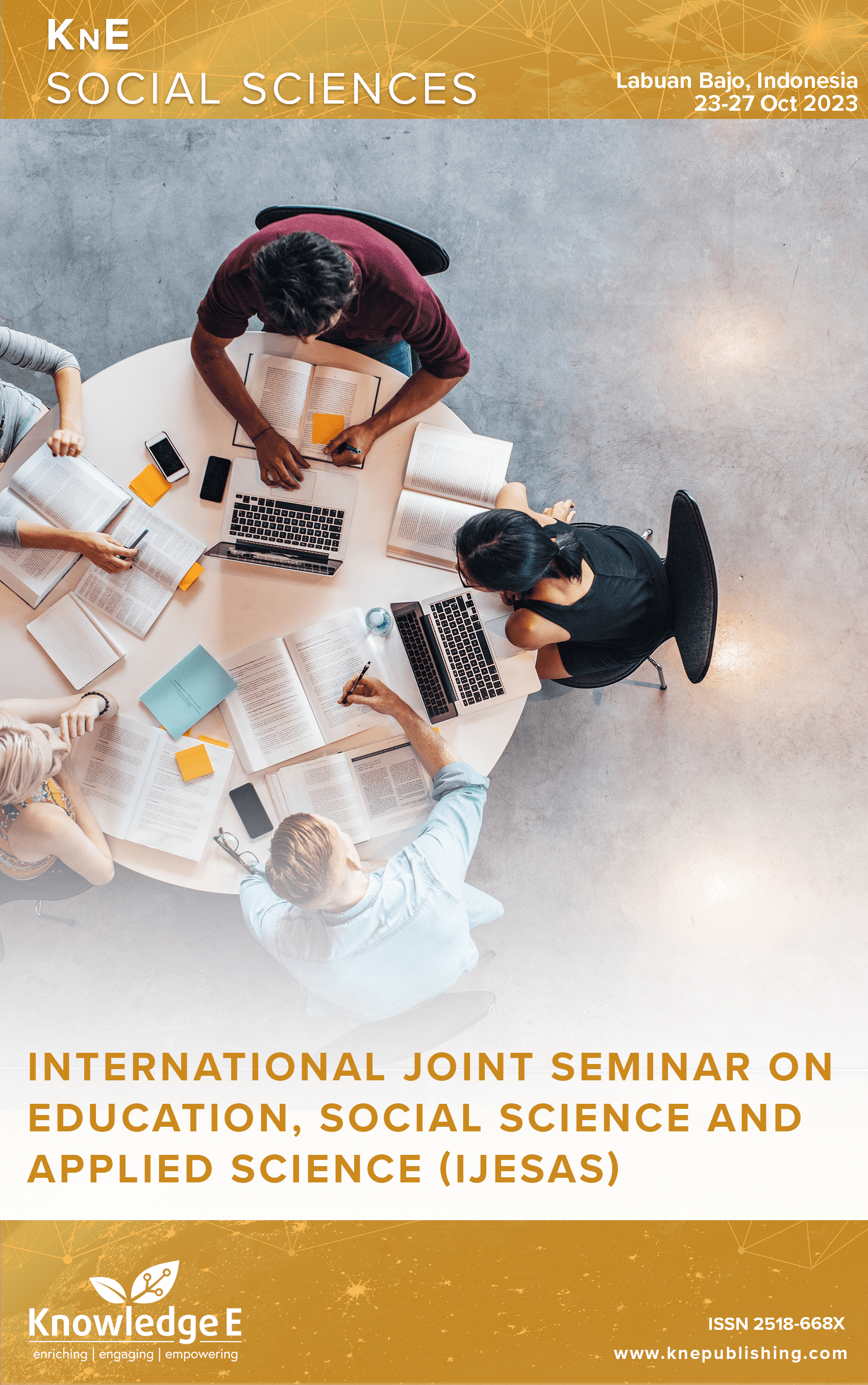Forecasting Methods in Science Education: A Bibliometric Analysis Using the Scopus Database
DOI:
https://doi.org/10.18502/kss.v9i19.16535Abstract
This study utilizes a detailed bibliometric analysis to thoroughly explore the literature surrounding forecasting methods and models in science education. It highlights significant trends, applications, and impacts of these methodologies. Leveraging data from the Scopus database pinpoints essential themes and notable gaps within the current body of work. The research underscores the importance of integrating forecasting techniques across various scientific disciplines and applying these techniques to address real-world challenges in education. This comprehensive analysis is intended to contribute richly to academic dialogue and guide the development of future educational strategies and policies. By identifying and discussing these key elements, the study aims to enhance understanding and implementing forecasting methods in academic settings, ultimately influencing both practice and theory in science education.
Keywords: forecasting methods, science education, bibliometric
References
Dhar J, Jodder AK. An effective recommendation system to forecast the best educational program using machine learning classification algorithms. Ingenierie des Systemes d’Information. 2020;25(5):559–68. DOI: https://doi.org/10.18280/isi.250502
Woelmer WM, Moore TN, Lofton ME, Thomas RQ, Carey CC. Embedding communication concepts in forecasting training increases students’ understanding of ecological uncertainty. Ecosphere. 2023;14(8):1–23. DOI: https://doi.org/10.1002/ecs2.4628
Olsson F, Moore TN, Carey CC, Breef-Pilz A, Thomas RQ. “A Multi-Model Ensemble of Baseline and Process-Based Models Improves the Predictive Skill of Near-Term Lake Forecasts.,” Water Resources Research. vol. 60, no. 3, p. e2023WR035901, 2024. https://doi.org/10.1029/2023WR035901. DOI: https://doi.org/10.1029/2023WR035901
Tang HW, Chou TR. On the fit and forecasting performance of grey prediction models for projecting educational attainment. Kybernetes. 2016;45(9):1387–405. DOI: https://doi.org/10.1108/K-03-2014-0050
Ahmadi M, Khashei M. A new hybridization filtering-based linear-nonlinear models for time series forecasting. Journal of Engineering Research (Kuwait). 2023;11(1):371– 99.
Willson AM, Gallo H, Peters JA, Abeyta A, Bueno Watts N, Carey CC, et al. Assessing opportunities and inequities in undergraduate ecological forecasting education. Ecol Evol. 2023 May;13(5):e10001. DOI: https://doi.org/10.1002/ece3.10001
Börner K, Rouse WB, Trunfio P, Stanley HE. Forecasting innovations in science, technology, and education. Proc Natl Acad Sci USA. 2018 Dec;115(50):12573–81. DOI: https://doi.org/10.1073/pnas.1818750115
Bousnguar H, Najdi L, Battou A. Forecasting approaches in a higher education setting. Educ Inf Technol. 2022;27(2):1993–2011. DOI: https://doi.org/10.1007/s10639-021-10684-z
Markova SM, Tsyplakova SA, Sedykh CP, Khizhnaya AV, Filatova ON. “Forecasting the development of professional education.,” In: The 21st Century from the Positions of Modern Science: Intellectual, Digital and Innovative Aspects. pp. 452–459. Springer (2020). https://doi.org/10.1007/978-3-030-32015-7_51. DOI: https://doi.org/10.1007/978-3-030-32015-7_51
Boamah PO, Ho YS. “Bibliometric Analysis of Ghana Publications in the Science Citation Index Expanded.,” Revista de Biología Tropical. vol. 66, no. 1 SE-Articles, pp. 106–121, 2018. DOI: https://doi.org/10.15517/rbt.v66i1.29250
Erdoğmuş C, Korkmaz Ö. TRENDS IN EDUCATIONAL TECHNOLOGIES ACCORDING TO ARTICLES PUBLISHED IN THE LAST 20 YEARS IN INTERNATIONAL LITERATURE. International Online Journal of Primary Education. 2022;11(1):232–59. DOI: https://doi.org/10.55020/iojpe.1083925
Liu Z, Ren L, Xiao C, Zhang K, Demian P. “Virtual reality aided therapy towards health 4.0: A two-decade bibliometric analysis.” (2022). https://doi.org/10.3390/ijerph19031525. DOI: https://doi.org/10.3390/ijerph19031525
Mittal NP, Garg M. “Comprehensive bibliometric overview of research trends of Indian Journal of Pharmaceutical Education and Research.” Indian Journal of Pharmaceutical Education and Research. 2022;56(3s no. 3s):S559–69. DOI: https://doi.org/10.5530/ijper.56.3s.165
Ren XS, Liu YJ. “A bibliometric analysis on higher education curricula model BT - Proceedings of the 2018 2nd International Conference on Education, Economics and Management Research (ICEEMR 2018).” Presented at the June (2018). DOI: https://doi.org/10.2991/iceemr-18.2018.183
Donthu N, Kumar S, Mukherjee D, Pandey N, Lim WM. “How to conduct a bibliometric analysis: An overview and guidelines.” J Bus Res. 2021;133:285–96. DOI: https://doi.org/10.1016/j.jbusres.2021.04.070
Supriyadi S, Suhandi A, Samsudin A, et al. “Analysis scopus article on phenomenonbased learning through bibliometric analysis.” KnE Social Sciences. vol. 9, no. 13 SE-Articles, p. 2024. https://doi.org/10.18502/kss.v9i13.16072. DOI: https://doi.org/10.18502/kss.v9i13.16072
Ismail I, Riandi R, Kaniawati I, Permanasari A, Sopandi W, Supriyadi S. “Education for sustainable development in secondary school: A review and bibliometric analysis.” KnE Social Sciences. vol. 9, no. 13 SE-Articles, p. 2024. DOI: https://doi.org/10.18502/kss.v9i13.16069
Lagos A, Caicedo JE, Coria G, Quete AR, Martínez M, Suvire G, et al. State-of-the-art using bibliometric analysis of wind-speed and-power forecasting methods applied in power systems. Energies. 2022;15(18):6545. DOI: https://doi.org/10.3390/en15186545
Chao CC, Yang JM, Jen WY. Determining technology trends and forecasts of RFID by a historical review and bibliometric analysis from 1991 to 2005. Technovation. 2007;27(5):268–79. DOI: https://doi.org/10.1016/j.technovation.2006.09.003
Daim TU, Rueda G, Martin H, Gerdsri P. Forecasting emerging technologies: Use of bibliometrics and patent analysis. Technol Forecast Soc Change. 2006;73(8):981– 1012. DOI: https://doi.org/10.1016/j.techfore.2006.04.004
Singh S, Dhir S, Das VM, Sharma A. Bibliometric overview of the technological forecasting and social change journal: Analysis from 1970 to 2018. Technol Forecast Soc Change. 2020;154:119963. DOI: https://doi.org/10.1016/j.techfore.2020.119963
Effendi DN, Anggraini W, Jatmiko A, Rahmayanti H, Ichsan IZ, Rahman MM. “Bibliometric analysis of scientific literacy using VOS viewer: Analysis of science education.” In: Journal of Physics: Conference Series. pp. 12096. IOP Publishing (2021). https://doi.org/10.1088/1742-6596/1796/1/012096. DOI: https://doi.org/10.1088/1742-6596/1796/1/012096
Kuzior A, Sira M. “A bibliometric analysis of blockchain technology research using VOSviewer. Sustainability 2022, 14, 8206,” (2022). DOI: https://doi.org/10.3390/su14138206

